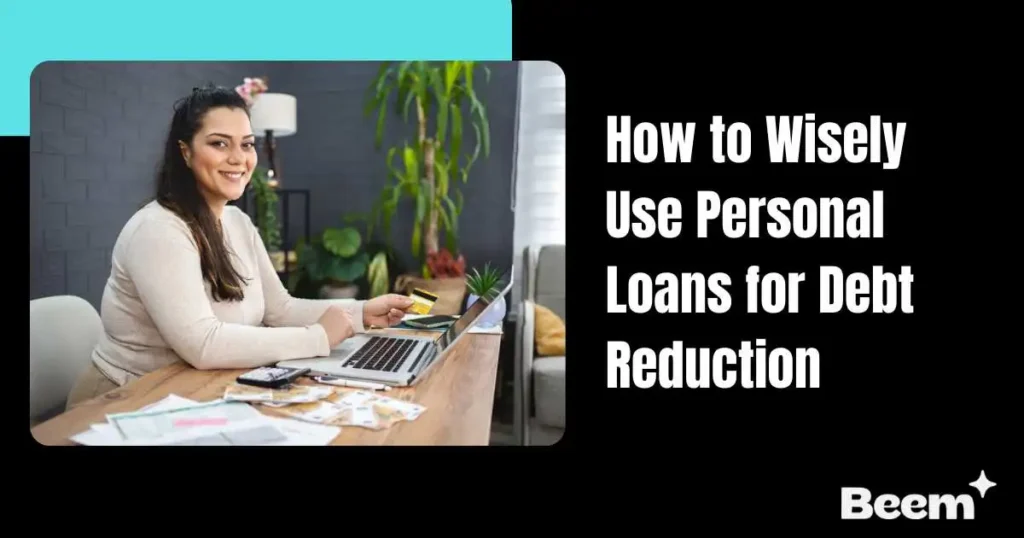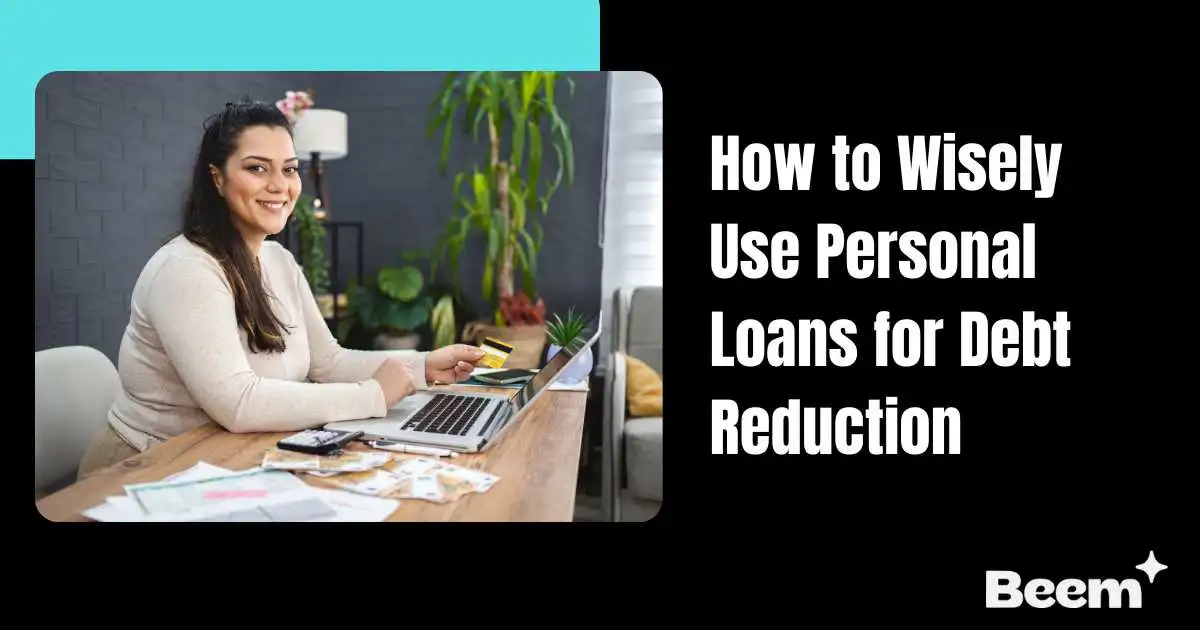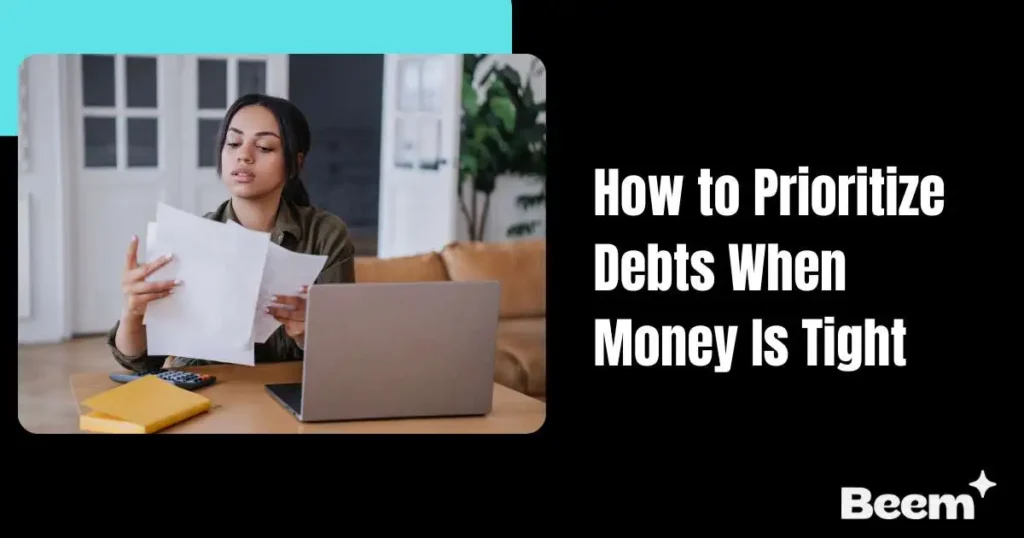At A Glance
Debt. It’s a four-letter word that strikes fear into the hearts of millions. Whether it’s high-interest credit card bills piling up, medical expenses that weren’t covered by insurance, or an overwhelming mountain of student loans, many people find themselves buried in debt, unsure how to escape. The burden of multiple debts can quickly spiral out of control, making each day feel like a financial battle. For many, it seems like there’s no way out — until you discover the power of a personal loan.
Using a personal loan for debt reduction can offer a lifeline — a single loan with a lower interest rate to consolidate your debt into one manageable payment. It can reduce the pressure, lower your interest payments, and put you back on track toward financial freedom. However, any financial decision must be approached carefully and strategically. In this blog, we’ll explore how to use personal loans wisely for debt reduction, helping you make smarter decisions that lead to lasting financial stability.
Why Managing Debt Matters
Managing debt can feel overwhelming, especially when high-interest credit cards, loans, and other obligations stack up. For many individuals, making payments on multiple debts can become a struggle, often leaving them with limited options and no clear path to debt freedom.
One potential solution that many overlook is using personal loans for debt reduction. Personal loans can be a powerful tool for consolidating debt, lowering interest rates, and simplifying finances. However, like any financial tool, they need to be used wisely to be effective.
In this guide, we’ll explore how personal loans work, when they make sense for debt reduction, and the strategies for using them responsibly to gain control of your finances. We’ll also introduce Beem’s services, which can help you compare loan offers and track your progress as you work toward financial freedom.
Also Read: What to Do If You’re Facing Debt Collection Calls
Understanding Personal Loans and Their Role in Debt Reduction
A personal loan is an unsecured loan that provides a lump sum to be repaid over a set period, typically with a fixed interest rate. Unlike credit cards, which allow you to borrow up to a set credit limit and only require minimum monthly payments, personal loans come with a fixed repayment schedule and a precise end date. The amount you borrow and the interest rate depend on your creditworthiness and the lender’s terms.
Regarding debt reduction, personal loans are often used to consolidate high-interest debts like credit cards, medical bills, or payday loans into one loan with a lower interest rate. Instead of juggling multiple payments and interest rates, a personal loan allows you to make a single, predictable monthly payment, often at a lower rate than the sum of the individual rates you were paying before.
One of the most significant benefits of using a personal loan for debt consolidation is saving you interest over time. With a lower interest rate, you can pay off your debt faster and keep more of your monthly payment toward the principal.
But like any tool, personal finance has pros and cons. Examine when they’re the right solution for debt reduction and how to use them effectively.
When to Use a Personal Loan for Debt Reduction
While personal loans can be an excellent option for many people, they aren’t right for everyone. Evaluating your financial situation and determining if a personal loan will help you achieve your debt reduction goals is essential. Here are a few scenarios when a personal loan might make sense:
You Have Multiple High-Interest Debts
Suppose you’re struggling with high-interest credit card debt, payday loans, or other expensive loans. In that case, a personal loan can consolidate those debts into a single loan with a lower interest rate. This reduces the amount of interest you’re paying over time, and more of your monthly payment goes toward paying down the actual principal balance.
For example, let’s say you have three credit cards with interest rates of 22%, 18%, and 24%. If you have balances on all three cards, you’re paying a significant amount in interest each month. Consolidating those credit cards into a personal loan with a 12% interest rate can reduce your monthly interest payments, helping you pay off your debt more quickly.
You Have a Stable Income and the Ability to Make Consistent Payments
Before taking on any loan, assessing your financial situation is essential. Can you afford to make the monthly payments on a personal loan? If your income is stable and you can make consistent payments, a personal loan could help you get back on track with your debt reduction efforts.
That said, if you’re experiencing job instability or irregular income, a personal loan may not be the best solution, as missing payments could lead to higher fees and damage your credit score.
You’re Not Tempted to Take on More Debt
One of the most significant risks of using a personal loan for debt reduction is the temptation to take on new debt. It’s essential that once you consolidate your debts, you avoid accumulating more credit card balances or taking out new loans. Personal loans are best used for debt consolidation and debt repayment, not for continuing to spend on unnecessary purchases.
If you’ve struggled with impulse buying or accumulating debt, committing to a responsible repayment strategy is essential. If you have a history of overspending, you should focus on paying off existing debts before taking on a new loan.
You Want a Clear Repayment Timeline
Personal loans come with a fixed repayment schedule, meaning you know exactly when your debt will be paid off and how much you need to pay each month. This is a significant advantage over credit cards, where interest charges and balances fluctuate monthly. A predictable payment structure can help you plan and stay on track to become debt-free.
If you prefer knowing exactly when your debt will be gone and want the assurance of regular, fixed payments, a personal loan can help you establish a clear path to financial freedom.
Also Read: Tips for Managing Debt as a Recent Graduate
How to Use Personal Loans Wisely for Debt Reduction

Once you’ve determined that a personal loan is the right solution for your debt, it’s time to use it wisely. Here are several strategies to ensure that your loan works for you, not against you:
1. Shop Around for the Best Interest Rates
The interest rate you secure on a personal loan significantly impacts the total amount you’ll pay over the life of the loan. A lower interest rate means you’ll pay less in interest, and more of your monthly payment will go toward paying down your debt.
Shopping around and comparing personal loan offers is essential to finding the best rate for your situation. Beem’s marketplace makes comparing personal loans from different lenders easy, ensuring you find the loan with the lowest possible interest rate. You can reduce the loan cost and save money over time by carefully reviewing multiple options.
2. Consolidate High-Interest Debts First
When using a personal loan to reduce debt, prioritize consolidating your high-interest debt first. Credit cards, payday loans, and other unsecured debts often come with interest rates as high as 20-30%. By consolidating these high-interest debts into a personal loan with a lower rate, you can reduce the total amount of interest you pay and free up more of your monthly payment to go toward the principal balance.
First, focus on consolidating credit card debt. Credit cards tend to have the highest interest rates, and consolidating them can lead to significant savings.
3. Create a Realistic Repayment Plan
Before you take out a personal loan, creating a realistic repayment plan is essential. How much can you afford to pay each month? Will the loan term align with your budget and financial goals? Make sure the loan payments fit comfortably into your monthly budget to avoid any risk of missing payments or accumulating more debt.
Beem’s platform offers budgeting tools to help you assess your monthly payment capacity and ensure that the loan fits into your financial plan. Setting clear expectations and following a strict repayment schedule will help you stay on track.
4. Avoid Taking on More Debt
Once you’ve consolidated your debts and have a personal loan, avoiding taking on more debt is crucial. Using a personal loan for debt reduction is only effective if you don’t continue to rack up new debt. If you consolidate credit card debt, avoid using those credit cards until the loan is paid off.
To stay disciplined, consider cutting back on credit card use or setting strict spending limits. Many people find it helpful to freeze their credit cards or store them in a safe place until the loan is paid off.
5. Set Up Automatic Payments
Set up automatic payments for your personal loan to ensure that you never miss a payment. Late payments can increase fees and interest rates, making it harder to get out of debt. Setting up automatic payments guarantees that the loan is paid on time, every time.
Beem’s platform allows you to track your payments and set automated reminders for your loan due dates. You can stay on track by automating your payments without worrying about missing a payment.
Risks of Using Personal Loans for Debt Reduction
While personal loans can be a helpful tool for reducing debt, they come with risks that should be considered before moving forward:
1. Over-Borrowing
One of the most significant risks of using a personal loan for debt reduction is borrowing more than you need. If you consolidate your existing debt and then take out a larger loan than necessary, you may take on more debt than you can afford to repay.
Borrow only what is necessary to pay off debt. Avoid using personal loans to get extra cash for non-essential purchases.
2. Fees and Penalties
Many personal loans come with origination fees or early repayment penalties. These fees can add to the loan cost and should be factored into your decision-making process. Always review the loan terms carefully to ensure no hidden fees or penalties could make the loan more expensive than expected.
Beem’s platform makes it easy to compare loans and factor in fees to find the most affordable option for debt consolidation.
3. Longer Repayment Periods
While consolidating debt with a personal loan can lower monthly payments, it can also extend the repayment period. This means you could pay more in interest over time.
To avoid this, consider loans with shorter repayment terms that allow you to pay off your debt faster, even if the monthly payments are higher. The goal is to repay the loan quickly to reduce the overall interest paid.
How Beem Can Help You Use Personal Loans Wisely for Debt Reduction
Beem’s debt consolidation marketplace makes it easy to compare personal loan options and find the best deal for reducing debt. With Beem, you can:
- Compare interest rates and repayment terms from multiple lenders.
- Find low-interest personal loans that can help you consolidate your high-interest debts.
- Use Beem’s financial tools to track your progress and ensure you stay on top of payments.
Beem also offers Everdraft™ Instant Cash, which can help with immediate financial relief while you work on reducing your longer-term debt.
Personal Loans for Debt Reduction
Using personal loans wisely for debt reduction can effectively regain control of your finances, lower your interest rates, and simplify your debt repayment process. By following the abovementioned strategies, you can use personal loans to reduce your debt and get back on track financially. With apps like Beem, you have the resources to compare loan options, track your progress, and stay on top of your financial health.
If you’re ready to take control of your debt and work toward financial freedom, start by exploring Beem’s marketplace to find the best personal loan options. Remember, using personal loans wisely is about creating a clear plan, sticking to your payments, and avoiding the temptation of new debt.
FAQs on Personal Loans for Debt Reduction
Can a personal loan help me pay off credit card debt?
A personal loan can help you pay off credit card debt by consolidating it into a single loan with a lower interest rate. By consolidating, you’ll only have to make one monthly payment, and you could save on interest charges compared to continuing to pay credit card minimums.
How can I get a lower interest rate on a personal loan for debt consolidation?
To get the best interest rate on a personal loan, having a good credit score and a stable income is essential. Shop around for loans from different lenders, compare interest rates, and consider using Beem’s marketplace to find the most competitive personal loan options for consolidating your debt.
Will taking out a personal loan hurt my credit score?
A personal loan can temporarily impact your credit score due to the hard inquiry when you apply for the loan. However, use the loan to consolidate high-interest debt and make regular, on-time payments. It can improve your credit score over time by reducing your credit utilization rate and improving your payment history.
How long does it take to pay off debt with a personal loan?
The time it takes to pay off debt with a personal loan depends on the loan terms and the amount of debt you’re consolidating. Typically, personal loans for debt reduction come with repayment terms ranging from 12 months to 5 years. The shorter the term, the higher the monthly payments, but you’ll pay off the debt faster.
What happens if I miss a payment on my loan?
Missing a payment on your loan can lead to late fees, increased interest rates, and damage to your credit score. Setting up automatic payments or reminders is essential to ensure you never miss a due date. If you struggle to make payments, contact the lender to discuss payment deferral or modification options.












